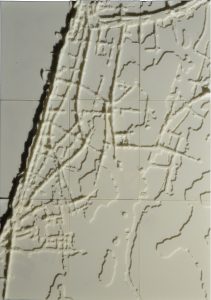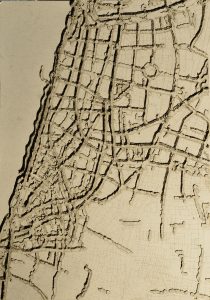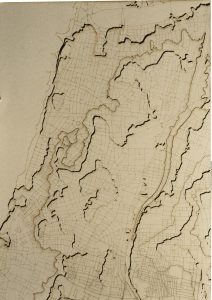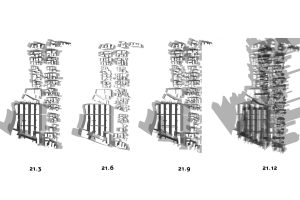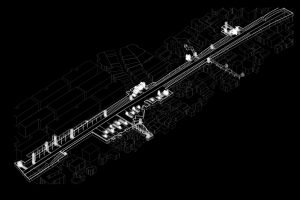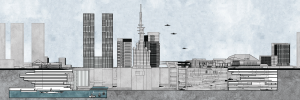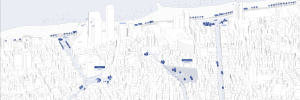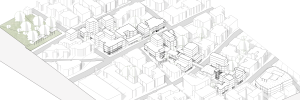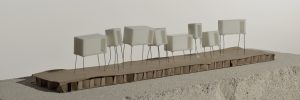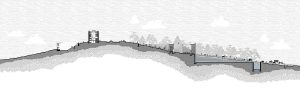The Underline
Walking – this fundamental action we perform as users of public space, and the experience accompanying it, have been marginalized in urban planning over recent decades. A brief stroll in the immediate surroundings of one’s home is all that is needed to realize that pedestrians are often overlooked in urban planning. This oversight is severe, to the point of absurdity, that the term “walkability” had to be coined to remind planners to include this essential aspect when beginning a design project, as it would not simply materialize on its own.
This issue isn’t unique to any specific geographical area in Israel. In fact, it can be said that it’s a central topic in contemporary urban planning discourse in other locations around the world. That said, the project focuses on Tel Aviv’s urban space – one that we perceive as being present in the municipality’s activity, and its attempt to prioritize pedestrians.
The project addresses a key problem: the lack of connection in urban built environments from the user’s perspective – the pedestrian. This is expressed in reduced accessibility and interaction among pedestrians and with their physical surroundings, due to fragmented walking infrastructure. The project explores how to reintegrate pedestrians into the urban fabric, especially in areas with low human activity due to dominant vehicular traffic.
The solution involves a fundamental shift in the current planning approach and a unique interpretation of the boulevard concept. The project adopts a position seeking to isolate the act of walking, create spatial autonomy for it, a kind of parallel universe, and place it at the center of planning, contrary to the currently accepted planning approach of first creating the built spaces, and around it, the open spaces.
The chosen site for intervention is a section of Har Zion Boulevard in Tel Aviv. Currently a major, intensive traffic artery, it was once partially an urban boulevard before being demolished to widen the access road to the new central bus station. Despite its central location in residents’ perception when asked about it, it’s absent from the walking routes of most of them and of many others, who choose to skip it intentionally. Furthermore, significant changes are expected in the coming years with the introduction of the light rail and the construction of the first elevated station of the Green Line south of Rokach Boulevard (Shapira station). Nevertheless, there are still no comprehensive spatial plans for area renewal for the benefit of the pedestrians who will use the train, and Har Zion Boulevard, currently a street, will become a street with light rail. The intervention strategy includes rethinking the concept of a boulevard and the act of walking, so that walking itself will take place in the underground medium, where the light rail was supposed to pass, as well as at different levels of the project, to allow for multiple walking routes and experiences, as well as varied social interactions. This underground space requires special attention to natural elements like light and ventilation, which in a space above ground are sometimes taken for granted. The project attempts to examine and propose a conceptual design for an underground boulevard, with natural light entry as the leading element, shaping the incisions at street level serving as the roof of the boulevard.







